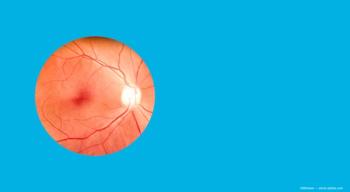
IKA 2024: Looking at the present and future of cross-linking in keratoconus treatment
Justin Schweitzer, OD, FAAO, from Vance Thompson Vision, talked about his session at the IKA Symposium discussing cross-linking in keratoconus treatment, with a look at both the present and looking toward the future.
Justin Schweitzer, OD, FAAO, from Vance Thompson Vision, talked about his session at the IKA Symposium discussing cross-linking in keratoconus treatment, with a look at both the present and looking toward the future.
Video Transcript:
Editor's note: The below transcript has been lightly edited for clarity.
Justin Schweitzer, OD, FAAO:
Hi, my name is Justin Schweitzer. I'm an optometrist at Vance Thompson Vision. And it's been my pleasure to be involved with the second annual IKA symposium. I had the opportunity, alongside Dr. Bill Trattler and Dr. Steven Greenstein, to talk about cross-linking, and we did the first roundtable. Our education and our discussion really was around a variety of different questions that I posed to the other two doctors. One being: Do you crosslink advanced keratoconus patients? Two being: Do you crosslink pediatric patients? And we had a robust discussion around those scenarios. We then talked about what are some interventions for our patients that have been crosslinked? How do we rehabilitate their vision? Yes, scleral contact lenses are wonderful, even spectacle lenses. But now we have surgical options like topography-guided PRK. We talked a little bit about CTAK and INTACS.
We talked a little bit about expectations for our patients, when they have these disparate procedures, and how we should educate them so that they're prepared to feel confident with the procedure that they're gonna have done. We discussed when is too thin to crosslink a patient, and really, all of the panelists in my group said they'll just thicken the cornea a bit with pharmaceutical agent to be able to crosslink. We've looked at studies around this, the safety of doing it, there's no question it can be done. What's more risk for patients is to not have it done. And so we all agreed that you can do a thin cornea. Dr. Trattler said he's done as thin as 210 microns with no adverse reactions. We've also talked a little bit about should children, pediatric patients, be crosslinked. There's a good study that was published in cornea looking at 10 year results of pediatric patients undergoing cross-linking. Not only did they improve by about a diopter over that 10 year period, but they stayed stable over that timeline, as well. We all agreed that pediatric patients if they truly have keratoconus and [it] is progressive in nature, should be crosslinked as well.
We really ended talking about what is the cross-linking of tomorrow look like and so we talked about epi-on cross-linking talked a little bit about accelerated epi-on cross-linking. These are clinical trials that are ongoing and wrapping up currently, pharmaceutical agents, will they serve a role and will we get away from cross-linking and use pharmaceutical agents to stop the progression of keratoconus? It's really an exciting time in the management of our patients with keratoconus.
Newsletter
Don’t miss out—get Ophthalmology Times updates on the latest clinical advancements and expert interviews, straight to your inbox.


















































.png)


